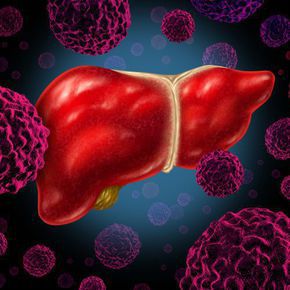Hepatic stem cells with high levels of telomerase could contribute to liver regeneration

Understanding the remarkable ability of the liver to repair and regenerate is a key step in understanding what happens when the organ ceases to function properly, such as in cases of cirrhosis or liver cancer. Hepatic stem cells with high levels of telomerase, a protein often associated with aging resistance, act on mice to regenerate the organ during normal cell fluctuations or tissue damage, according to a study by researchers at the Stanford University School of . The cells are distributed on the lobes of the liver, allowing it to repair quickly, regardless of the location of the lesions. We have discovered that these rare, proliferating cells spread in the organ and that they are needed to allow the liver to replace the damaged cells. We believe it is also possible that these cells could give rise to liver cancer when their balance disappears. The liver is unique among organs, due to its ability to fully regenerate from just 25% of the initial weight.
Chronic alcohol or hepatitis infection can cause deterioration and renewal cycles that lead to irreversible scarring that affects its function. But relatively little is known about how the liver is regenerated or what cells might be responsible for cancers. Telomerase is a complex of proteins that Without its activity, protective chromosome caps called telomeres would gradually shorten with each cell division. Most adult cells have little or no telomerase activity, and the progressive shortening of their telomes serves as a sort of molecular clock that limits the life of cells - and, as is believed, a body. However, stem cells and some cancer cells make enough telomerase to keep telomeres shorter, effectively stopping the aging clock and allowing an apparently unlimited number of cell divisions.
Mutations that block telomerase activity cause cirrhosis in mice and humans. Artandi wanted to see if he could use telomerase as a marker to identify the subset of cells responsible for liver regeneration during a normal fluctuation. These cells, he thinks, could also serve as the origin cell for liver cancer. Researchers found that in mice approximately 3-5 percent of all liver cells have unusually high levels of telomerase. Cells with lower levels of genes involved in normal cellular metabolism were evenly distributed on liver lobules.
During a normal fluctuation of the cells or after the liver has been damaged, these cells proliferate instead of making clusters of new liver cells. These rare cells can be activated to divide and form clones throughout the liver, Artandi said.
Source : csid.ro
Views : 2999
Popular Article
- (photo) Nude becomes art.
Posted: 2018-03-17, 9810 views.
- The harmful effects of air conditioning on the skin
Posted: 2017-06-08, 8519 views.
- 3 causes of dyed hair discoloration
Posted: 2017-06-15, 8403 views.
- Why early puberty occurs in girls: symptoms, favors, diagnosis and treatment
Posted: 2017-10-24, 8243 views.
- Good or bad skin treatments in the hot season
Posted: 2017-06-07, 7975 views.
Recommendations
- (photo) Nude becomes art.
Posted: 2018-03-17, 9810 views.
- The harmful effects of air conditioning on the skin
Posted: 2017-06-08, 8519 views.
- 3 causes of dyed hair discoloration
Posted: 2017-06-15, 8403 views.
- Good or bad skin treatments in the hot season
Posted: 2017-06-07, 7975 views.
- Risks of practicing sports on hot days
Posted: 2017-06-12, 7549 views.
 4 effective ingredients in the fight against acne.
4 effective ingredients in the fight against acne. How to get rid of hiccups fast
How to get rid of hiccups fast The wheat bran diet: the secret of lost pounds as if by magic
The wheat bran diet: the secret of lost pounds as if by magic The recipe that will sweeten your soul this weekend!
The recipe that will sweeten your soul this weekend!  Is it dangerous or not to refreeze meat after thawing it?
Is it dangerous or not to refreeze meat after thawing it?  The unusual sign of diabetes indicated by saliva.
The unusual sign of diabetes indicated by saliva. What to drink to boost your immune system.
What to drink to boost your immune system. 10 foods that help you never age.
10 foods that help you never age. What actually happens in your body if you drink a cup of coffee for breakfast
What actually happens in your body if you drink a cup of coffee for breakfast 5 surprising benefits of chia seeds
5 surprising benefits of chia seeds